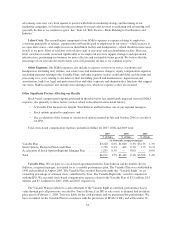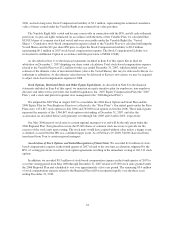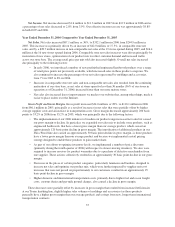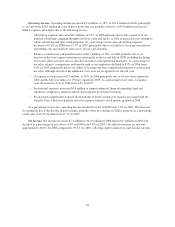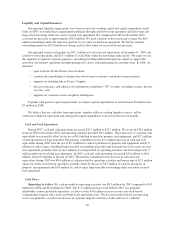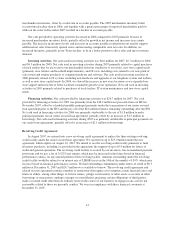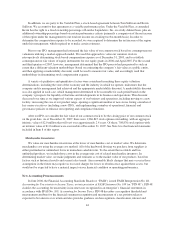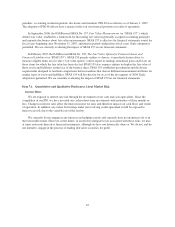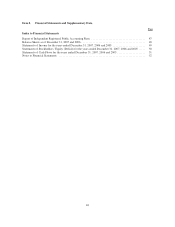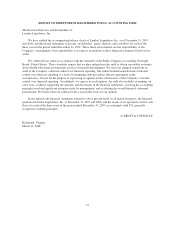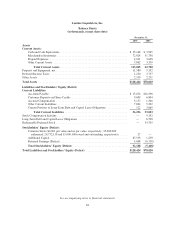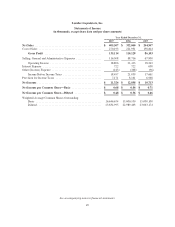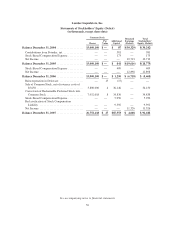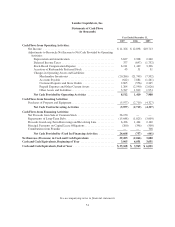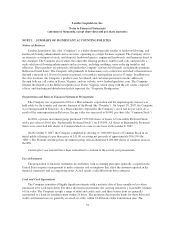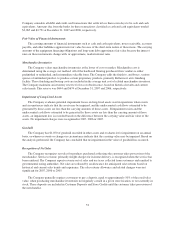Lumber Liquidators 2007 Annual Report Download - page 49
Download and view the complete annual report
Please find page 49 of the 2007 Lumber Liquidators annual report below. You can navigate through the pages in the report by either clicking on the pages listed below, or by using the keyword search tool below to find specific information within the annual report.Inflation
Inflationary factors such as increases in the cost of our product and overhead costs may adversely affect our
operating results. Although we do not believe that inflation has had a material impact on our financial position or
results of operations to date, a high rate of inflation in the future may have an adverse effect on our ability to
maintain current levels of gross profit and selling, general and administrative expenses as a percentage of net
sales if the selling prices of our products do not increase with these increased costs.
Critical Accounting Policies and Estimates
Critical accounting policies are those that we believe are both significant and that require us to make
difficult, subjective or complex judgments, often because we need to estimate the effect of inherently uncertain
matters. We base our estimates and judgments on historical experiences and various other factors that we believe
to be appropriate under the circumstances. Actual results may differ from these estimates, and we might obtain
different estimates if we used different assumptions or conditions. We believe the following critical accounting
policies affect our more significant judgments and estimates used in the preparation of our financial statements:
Recognition of Net Sales
We recognize net sales for products purchased at the time the customer takes possession of the merchandise.
We recognize service revenue, which consists primarily of freight charges for in-home delivery, when the service
has been rendered. We report revenue net of sales and use taxes collected from customers and remitted to
governmental taxing authorities. Net sales are reduced by an allowance for anticipated sales returns that we
estimate based on historical sales trends and experience. Any reasonably likely changes that may occur in the
assumptions underlying our allowance estimates would not be expected to have a material impact on our
financial condition or operating performance. In addition, customers who do not take immediate delivery of their
purchases are generally required to leave a deposit of up to 50% of the sales amount with the balance payable
when the products are delivered. These customer deposits benefit our cash flow and return on investment capital,
since we receive partial payment for our customers’ purchases immediately. We record these deposits as a
liability on our balance sheet under the line item “Customer Deposits and Store Credits” until the customer takes
possession of the merchandise.
Equity Compensation
We currently maintain a single equity incentive plan under which we may grant non-qualified stock options,
incentive stock options and restricted shares to employees and non-employee directors. Using the prospective-
transition method, we adopted the provisions of SFAS 123(R) effective January 1, 2006. Prior to the adoption of
SFAS 123(R), we used the intrinsic value method under the provisions of Accounting Principles Board Opinion
No. 25 (or “APB 25”). There were no material differences in the calculations of stock-based compensation
expense under APB 25 and SFAS 123, Accounting for Stock-Based Compensation in 2005. We recognize
expense for our stock-based compensation based on the fair value of the awards that are granted. Measured
compensation cost is recognized ratably over the service period of the related stock-based compensation award.
The fair value of stock options was estimated at the date of grant using the Black-Scholes-Merton valuation
model. In order to determine the related stock compensation expense, we used the following assumptions for
stock options granted during 2007:
• Expected life of 7.5 years;
• Expected stock price volatility of between 35% and 39%, based on the median volatility of companies
in a peer group;
• Risk-free interest rates from 4.2% to 4.6%; and
• Dividends are not expected to be paid in any year.
43


